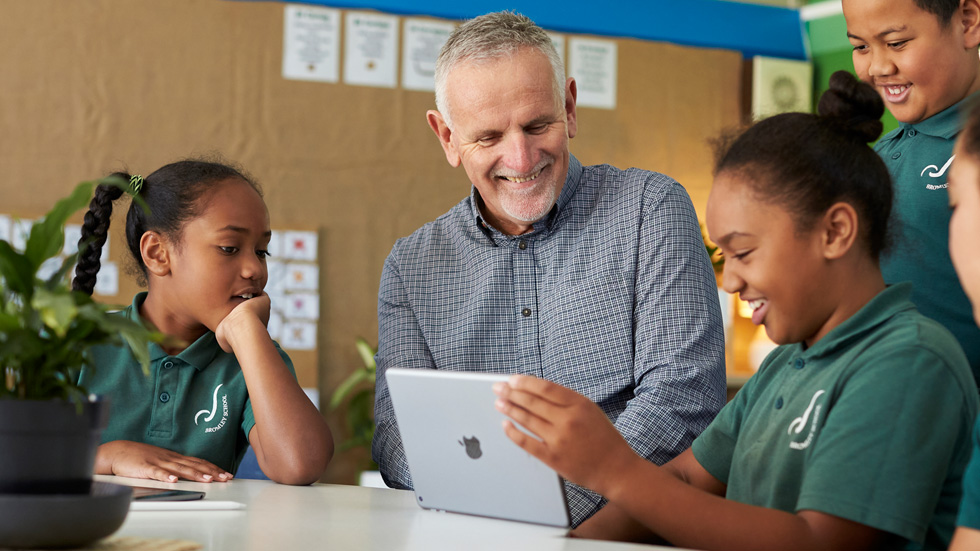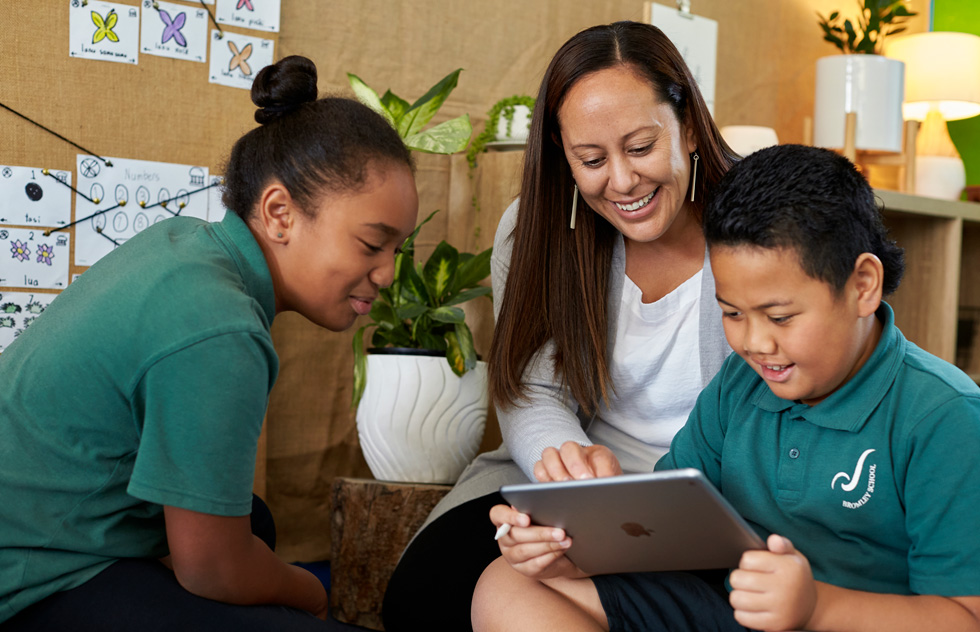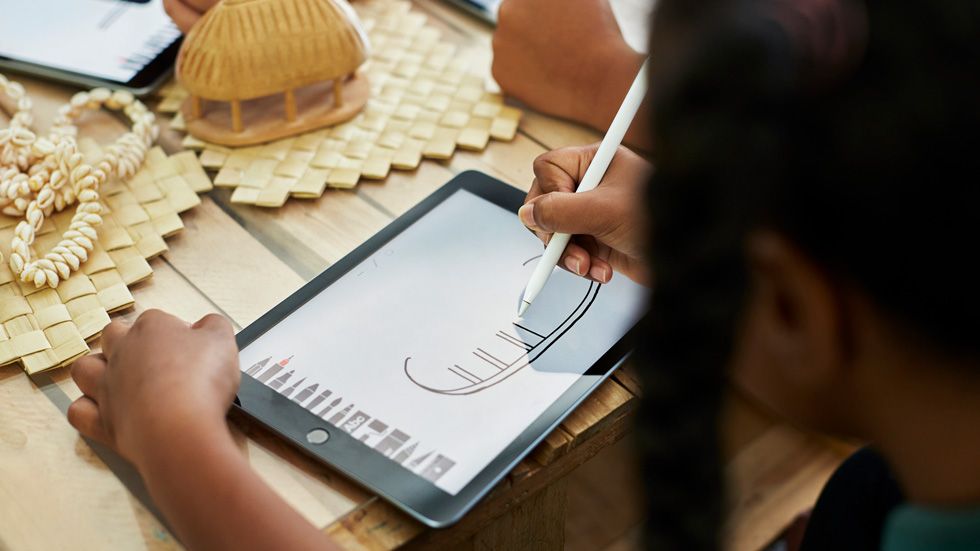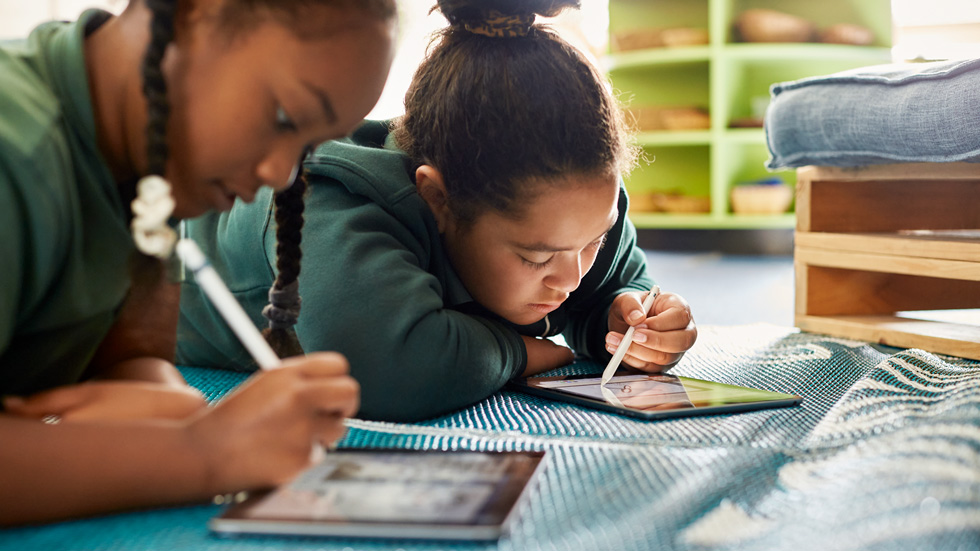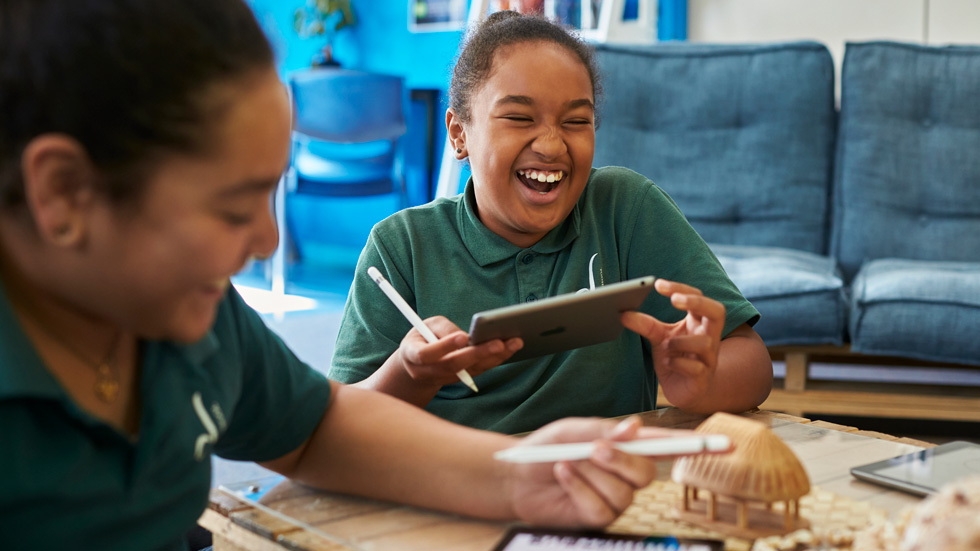FEATURE
01 March 2021
New Zealand students prototype their own Samoan language app with iPad
“Fa’afetai lava mo le avanoa” (“Thank you for the opportunity”)
Bromley School, a primary school that serves some of Ōtautahi Christchurch’s underprivileged communities, is readying Aotearoa New Zealand’s next generation of leaders. Principal Scot Kinley says ensuring equitable access to the most innovative tools for learning is critical to his students’ empowerment.
“We challenge our students to think big — we want them to make a positive difference in the world,” says Kinley. “It’s our job to equip them with the necessary knowledge and skills they’ll need to thrive. We know we can do that by fostering independent and self-directed learners, and iPad is a key tool in this mission.”
At Bromley School, every teacher and middle school student has their own iPad. There’s an Apple TV in every classroom, and a fleet of Macs for coding. Since introducing iPad, Bromley students are setting the bar for what’s possible when you inspire the minds of young learners. They’re winning regional digital creativity competitions, taking an active role in their learning successes, pitching their ideas to local community groups and investors, and sharing their experience with other schools.
“Tālofa lava, e te tautala Gagana Sāmoa?” (“Hello, do you speak Samoan?”)
When their much-loved Samoan language teacher moved to a local high school, many of Bromley’s Samoan students wanted to continue to learn Gagana Sāmoa — the language of the Samoan Islands — but no replacement teachers were available.
“A lot of our students’ parents or grandparents are fluent in their home language, but some of our students just know the basics — I had the same experience growing up,” explains Mele Togiaso, a teacher at Bromley School. “I'm part Māori and part Samoan, and I’m only now learning my family languages as an adult, thanks to a passionate group of kids!”
A group of students from years 3 through 6 (ages 8 through 11) asked Togiaso to help them find a way to continue their lessons. Together, they formed an inquiry group — the Digi Navigators — and started exploring apps, books, and websites they thought might help.
Unfortunately, nothing fit their needs. Some apps relied too heavily on text for younger learners, some didn’t provide audio to help with pronunciation or images to help with comprehension, and some didn’t include fun games to keep students engaged and on track.
The Digi Navigators were undeterred.
“Tātou a’oa’o Gagana Sāmoa!” (“Let’s learn Samoan!”)
“We decided to create a prototype for an app called Let’s Learn Samoan, because all of the kids at our school have access to iPad and we wanted it to be accessible to everyone,” says Jeremiah Laufiso, a year 5 student.
The Digi Navigators created their app prototype in Keynote, the powerful presentation tool that comes included with most Apple devices, because it allowed them to combine text, drawings, audio recordings, animations, and hyperlinks in one place — all essential elements of their dream app.
Togiaso used the App Design Journal from the Everyone Can Code curriculum, available as a free download from Apple, to help guide the group through the app development process. “It’s super helpful,” Togiaso says. “I share the Journal with anyone that asks how we created our app, because it provides such an easy, step-by-step process to follow.”
After brainstorming ideas and creating wireframes for their app, the students divided into content creation teams, sketching illustrations with Apple Pencil, creating animations in Keynote, and recording voice overs using the iPad’s built-in microphone.
Testing was also an important part of the process. “This is where we discovered bugs in our prototype, and got feedback on how we could improve our app,” says Amelia Abohay, a year 6 student. “A lot of different groups around our school helped by telling us what they liked and didn’t like, and giving us ideas for how we could make it even better.”
The Digi Navigators also met with a Gagana Sāmoa expert from their community. “This was really valuable because he gave us feedback on our pronunciation, and even more ideas about what we could include,” Amelia says.
Ole autu o lo’u o’o mai (The pitch)
“My mission is to inspire a new generation of Pacific nations and Māori leaders in the tech industry,” said Togiaso. “These groups are underrepresented in tech today, and we have so much to offer. I want our kids to see careers in tech as a genuine pathway in their future.”
In September 2020, the Digi Navigators were invited to pitch their idea at an event designed to increase opportunities for the next generation of Pacific nations tech innovators. In front of an audience of 50 local tech experts, investors, and teachers, five Digi Navigators presented their business case, demonstrated the app prototype, and answered questions from the crowd. They also received feedback from a local angel investor that has promised to provide continued support and mentorship to grow their idea.
“It was really cool to be able to teach our friends to speak Samoan using an app that we designed ourselves,” says Leonie Bradbrook, a year 6 student. “I would love to create more apps and help my friends.”
Fa’afoi ile afio’aga (Giving back to the community)
Back in regular lessons and at home, the Digi Navigators’ teachers and parents have noticed the deeper connection the students have forged with their culture, and their improved sense of themselves as capable and confident creators.
“In Pacific cultures, we achieve together,” says Togiaso. “It’s not about any one individual’s success — nobody is left behind. This experience showed our students that it is not enough for a smaller team to excel. For everyone to achieve, they all had to collaborate and make sure everybody was doing well.
“It’s ingrained in us to give back to our communities,” Togiaso continues. “These kids will be an amazing force for good not just in their aiga (family) — they have so much to offer the world.”
Share article
Images of Bromley School Students

